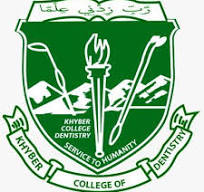CHALLENGES IN DENTISTRY
DOI:
https://doi.org/10.33279/jkcd.v2i2.490Abstract
Dentistry is bereft with challenges, left, right and center. As this field evolves year by year, decade by decade and century by century, we, the specialists and the general dental practioners, come across a plethora of obstacles that obstruct the path of dentists towards achieving and maintaining healthy mouth’s worldwide.
Dentistry is not a universally uniform field. Its standards of care vary from country to country, based on technology levels, spending power of the patient,skill level of the dentist and dental legislation. Hence the challenges facing dentistry tend to be unique to the country experiencing those said circumstances. While the United States grapples with third party involvement in dictating fees and treatment, proliferation of corporate dentistry and the considerable number of lawsuits ongoing in contemporary dental care, Pakistan is facing rather unique, but not so different, challenges itself.
The challenges facing the Pakistani dentist can be broadly divided into those posed by the patient, and those posed by the dental community itself. The dental awareness level of the patient has not increased drastically in the past few decades. Most patients report to the dentist only when their complaint has reached a level that requires drastic management such as an extraction or the large scale of Root canal treatment’s being carried out in the young demographic. The concept of routine dental checkups remains alien to most patients, consequently follow up rates are also quite abysmal, baring those patients having a major disease. The spending power of the patient remains low, necessitating extraction over a root canal, or even a Class II filling for that
matter. Formulating a cost effective yet comprehensive treatment plan thus is a serious ethical concern for the dentist as such patients are more likely to attend “quacks” and suffer substandard and often dangerous dental maltreatment.
As far as the dental community itself is concerned, the dentist faces a variety of challenges from his/her very field itself. The dental education one receives at the bachelor level can only impart a certain level of skill, in order to stand shoulder to shoulder to our western counterparts, Continuing Professional Development (CPD) and Continuous Education (CE) programs are an absolute necessity. Unfortunately, nothing of the sort exists, leaving the dentist to either proceed abroad for such programs or attend local seminars and workshops by his/her own interest. When no facility for continuous development exists, this leaves Pakistani dentists prone to the technology gap. Though technology is by no means a guarantor of a more successful treatment, it does make our jobs easier by reducing the operating time amongst other advantages. The cost of technology is another issue altogether, though it is one that is common to all dentists worldwide as the decision to invest in what technology depends on what kind of a hospital program/private practice is the dentist running.
A noteworthy point is that a trend has slowly started where now more and more general dentists are turning towards post-graduation and becoming specialists instead. This recent boom has lead to huge number of dentists giving exams such as FCPS Part I, MDS/MPhil/MSc entry exams. A downside to this phenomenon is that not all aspiring specialists can be accommodated into these training programs countrywide due to paucity of institutes, supervisors, political interference and high fee structures without any scope for scholarships.
Any criticism of this status quo is pointless without suggesting suitable solutions, but it should be clear that solutions won’t emerge overnight. Rather, baby steps will have to be taken first in order to make giant leaps in the future. To start taking these baby steps, we will first have to stop pointing fingers and join our heads together to see the bigger picture i.e. a healthy and smiling Pakistan.
Downloads
Published
How to Cite
Issue
Section
License
Copyright (c) 2012 Qiam Ud Din

This work is licensed under a Creative Commons Attribution-NonCommercial-NoDerivatives 4.0 International License.
You are free to:
- Share — copy and redistribute the material in any medium or format
- Adapt — remix, transform, and build upon the material
- The licensor cannot revoke these freedoms as long as you follow the license terms.
Under the following terms:
- Attribution — You must give appropriate credit , provide a link to the license, and indicate if changes were made . You may do so in any reasonable manner, but not in any way that suggests the licensor endorses you or your use.
- NonCommercial — You may not use the material for commercial purposes .
- No additional restrictions — You may not apply legal terms or technological measures that legally restrict others from doing anything the license permits.










